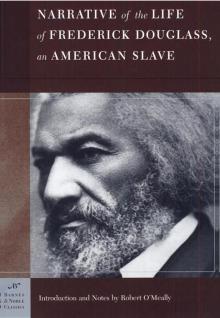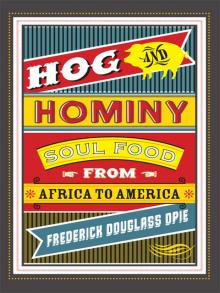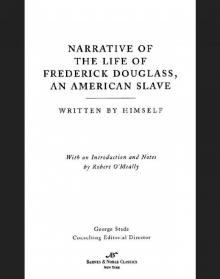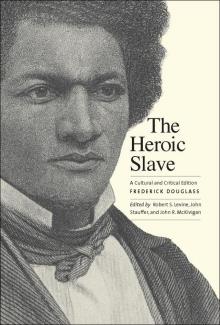- Home
- Frederick Douglass
Hog and Hominy: Soul Food From Africa to America Page 9
Hog and Hominy: Soul Food From Africa to America Read online
Page 9
The younger Powell remembers that, during his childhood years in Harlem, his mother stretched the meat or fish from the Sunday meal into dishes that lasted through the next Saturday: “A whole boiled cod, which I loathed, with its head and eye balefully looking at me, always offered its bones, tail, fins, and again that head as the basis of a New England fish chowder.” When his father started fishing in the spring, his mother cooked fried “fish four times a week until the cold weather rolled in.” Similarly, when rabbit was in season, “hucksters drove through the blocks with barrels of rabbits” for sale. His mother purchased enough rabbit to serve it in one form or another for a week. Culinary repetition also occurred when quarts of oysters and large smoked country hams arrived from relatives still living in the South. “Fresh greens were always cooked with this ham, from wild watercress in the spring to winter kale.”11
Powell describes a time in Harlem “when it was a disgrace to bring in bread from a store and, for that matter, anything that was already baked.” In his middle-class Harlem home, the family’s black coal-burning stove “was a place of magic,” where his mother made corn bread, biscuits, and muffins. For breakfast she fixed pancakes, salted mackerel, codfish cakes, and baked beans. The beans cooked “all night long on the back of the stove with plenty of black molasses on top and hunks of salt pork inside.”12
Stories of eating from Powell’s youth provide evidence that migration to the North did not alter African American cookery significantly. Migrants in the North continued to feel that breakfast should be a banquet, complete with ham, fried fish, eggs, sausage, bacon, grits, red-eye gravy, corn bread, and molasses. Lunch and dinner also remained the same, featuring large amounts of corn bread, greens, and various parts of the pig. For some migrants, cooking traditional dishes like pork chops with red-eye gravy, chitlins, trotters, snout and jowls, and hog maws reminded them of their past and their southern roots.13 Some migrants, like the Powells, received pork by mail from relatives in the South who slaughtered hogs in the winter. Collards and cabbage seasoned with salt pork, fried chicken, and sweet potato pie carried with them similar memories of childhoods in the South.14
As members of Harlem’s upper class, migrant families like the Powells could afford to eat like northern white elites or maintain their southern traditions. Studies on the city of Chicago by Tracy N. Poe, St. Clair Drake, and Horace R. Cayton show that black elites in that city could afford to eat very differently when they wanted to from working-class African American migrants who regularly consumed traditional southern food.15 Two characters interviewed by Drake and Cayton, named Baby Chile and Mr. Ben, were a case in point. Mr. Ben recalls a dinner party at Baby Chile’s apartment: “Baby Chile called us to the kitchen for supper—a platter of neckbones and cabbage, a saucer with five sausage cakes, a plate of six slices of bread, and a punchbowl of stewed prunes (very cold and delicious). Baby Chile placed some corn fritters on the table, remarking, “This bread ain’t got no milk in it. I did put some aig [egg] in it, but I had to make it widout any milk.”16 In contrast, the social gatherings of the Chicago’s black upper class featured food and beverage that was far more expensive than the traditional southern meal items that Baby Chile and Mr. Ben enjoyed. Speaking of northern elite African Americans in Chicago, Drake and Cayton write: “All through the year there is a continuous round of private informal parties and formal dinners. . . . On their tables one will find wild duck and pheasants in season, chicken and turkey in season and out, and plenty of their finest spirits and champagne.”17
Perhaps members of the black upper class enjoyed fried chicken, yams, grits, and greens at home with their families and served more expensive foods at important social gatherings. The lower classes, however, made do with cheap ingredients almost all the time. An African American women living on the West Side told Drake and Cayton, “One thing, over here you can always get something to eat at the market like a basket of beans or tomatoes and potatoes for a dime, before they are graded.” She added, “If you get more than you can use yourself, you can always sell or trade what you don’t want.”18
FIGURE 4.1 Negro tenant farmer eating breakfast in Creek County, Oklahoma. Library of Congress, Prints and Photographs Division, LC-USF34-035087-D.
FAMILY DIETS FROM SOUTH CAROLINA
South Carolina agricultural experiment station reports about family diets in the Piedmont and lower coastal plains areas of South Carolina provide excellent insights into the eating traditions migrants brought with them when they left the South.19 Researchers studied black and white farm families in Marion, Florence, Darlington, Lee, Dorchester, Sumter, and Charleston counties. Some owned, rented, or sharecropped land; others worked as wage-earning farmhands. The records showed that the “dietary habits” of African American families “resembled those of white families in corresponding sections of the state.”20
The focus here will be on the lower coastal region of South Carolina because records of food menus in black and white homes for summer, spring, fall, and winter are available. Not surprisingly, the spring and summer menus in the lower coastal region contain greater food diversity than the fall or winter menus. As for meat consumption, both black and white coastal farmers ate a lot of fried meats. A typical spring and summer menu primarily consisted of pork dishes such as “fried fat meat,” “fried ham,” “fried [pork] shoulder,” and “fried side meat [salt pork and bacon].” African Americans cooked fried pork dishes in addition to boiled pork dishes such as boiled pork shoulder and boiled ham.21 A similar study done in 1928 in the Mississippi Delta by Dorothy Dickins of Mississippi A & M, an HBCU, showed that blacks in that region also typically fried and boiled their food, with most vegetables “overcooked in fat” and meat “fried done and hard.” Both meats and vegetables were “over-done as well as greasy,” which at least in part explained “the high death rate, the frequent illnesses, and lack of energy” among African Americans in the Delta.22 Coastal South Carolinians prepared vegetables, meats, and fish in a similar fashion to farmers in the Mississippi Delta.
Both white and black cooks regularly ate fried fish. During the summer months, however, white families ate shrimp dishes such as “fried shrimp” for breakfast and shrimp and stew for dinner. Similarly, gumbo only appeared on a white menu. For African Americans, shrimp appeared at only one time, and it was on a fall menu as the breakfast dish “shrimp and gravy.” Side dishes also reveal ethnic similarities and differences in coastal South Carolina. Both black and white cooks regularly served corn bread, rice, and “okra and tomatoes” in the spring and summer months. Side dishes distinctive to white coastal cookery were “hambone with green beans,” “stewed pears,” potato salad, “squash with butter and cream,” and “fried corn.” In contrast, “hominy with fat meat gravy,” “cabbage with fat meat,” and “green beans boiled with fat pork” were all distinctly African American.23
In the fall and winter, common meats prepared among black and white cooks included fried pork, fried fat pork, fried pork shoulder, and more fried side meat. “Beefsteak” sausage, “liver hash,” beef stew, salmon, and “salmon and gravy” appeared only on white menus. In contrast, “shrimp and gravy,” oysters, fried rabbit, and pork stew cooked with pig ears, feet, and backbone appeared only on African American menus. These distinctive African American dishes were made in addition to southern staples such as fried pork and fried fat pork. White coastal cookery in the fall and winter included side dishes such as “dried peas cooked with fat pork,” “field peas with fat pork,” “turnips cooked with pork,” cole slaw, baked sweet potato, “peach pickle,” and “macaroni pie.” The side dishes that were common to both black and white cooks were biscuits, corn bread, baked sweet potatoes, turnips, and what Africans Americans called “dried peas boiled with fat meat,” which appeared as “dried peas cooked with fat pork” on white menus. The only distinctively African American side dishes on the menu were “collards boiled with meat” and “collards boiled with fat pork.”24
A survey of the s
easonal menus reveals that white coastal farmers economically fared much better than African Americans in 1939. This is evidenced by the appearance of luxury drinks and foods such as iced tea, jam, jelly, preserves, pies, cakes, and “jello with custard” on white menus. All these required store-bought sugar, baking powder, and spices. Coconut, bananas, “loaf bread,” “bakers bread,” cocoa, salmon (most likely canned salmon), and macaroni are other examples of luxury store-bought items that only appeared on white menus. The store-bought items that African Americans in coastal South Carolina apparently liked and ate were bologna, cheese, and crackers. When hog-killing meat was used up, both black and white families probably purchased their side meat, salt pork, and bacon from a store.25
The macaroni pie that appeared on white menus may possibly refer to macaroni and cheese.26 There is another reference to the southern preparation of macaroni and cheese in the 1928 report about farm families in the Mississippi Delta by Dorothy Dickins. Dickins found that most African American women had never tasted macaroni and cheese and only a few cooked it for their families because they complained that it was too “starchy and gummy.” Dickins goes on to say, “The majority feels that they have too little cash to spend on something which they perhaps cannot properly prepare or which, if they can, the family probably will not like.”27 What is interesting about this quote is that since the 1960s no African American feast I have attended prepared by southern-born women was considered complete without at least one large pan of labor-intensive homemade baked macaroni and cheese with bread crumbs on top. During research for this book, neither oral nor written sources provided an explanation of how and when the dish became apart of the culinary lexicon of African Americans.
Dickins’s 1928 study found that, as African Americans improved their environment and education, the variety in their diets increased. As a result, the high school and college educated had more nutritious eating habits, with larger amounts of fruits and vegetables composing their overall caloric intake, than did their less-educated neighbors. For an uneducated African American in the Delta, an increase in income “generally means an increase in quantity but not necessarily an increase in variety of food. As environment and intelligence improve, variety of food used increases,” writes Dickins.28 For many black belt residents, migrating northward provided access to education and exposure to people from around the world. In their new environments, southerners worked and lived in close quarters with Jews, West Indians, Latin Americans, and Europeans. These “foreigners” taught southern African American migrants how to cook and enjoy foods—like macaroni—that back home they called white folks’ food. Over time they adopted foods such as macaroni and cheese and pancakes as their own.
AFRICAN-INFLUENCED CUISINES OF THE CARIBBEAN
Immigrants from the Caribbean who migrated to New York after World War I started a number of restaurants in East Harlem. (An extensive discussion of Caribbean migration to New York will come in a later chapter.)29 Cubans in New York had a reputation for being epicureans. As one report noted, Cubans “love food, drink and delicacies of every kind, but it must be good.” The Ideal, at Lenox Avenue and 115th, and Toreador, at 110th, introduced African Americans to traditional Cuban food like agie el dulce, a sweet chili con carne typically served with a side order of fried plantains.30 One of the oldest Puerto Rican restaurants was Pascual Quintana’s El Caribe, which opened in 1920 at 235 West 116th Street. It started off as a place where working-class folks would go to order a thirty-cent mixta dinner—meat or fish and rice and beans from a steam table—and a coffee. In 1927, a year before the start of the Depression, the restaurant relocated to Fifth Avenue, where new management changed the menu to attract wealthier customers. Famous Latin American professional boxers as well as locals came to enjoy traditional dishes such as mafongo con chicharrones, mashed green plantains mixed with mashed fried pig skin and covered with garlic, onion, and hot pepper sauce, and pollo frito, fried chicken served with fried plantains or fried potatoes and a salad. Arroz con gallina, chicken and rice seasoned with ham, salt pork, tomatoes, green peppers, annatto seeds, salt, garlic, and onions, was another popular dish.31
The Saturday special was sancocho, a stew made with sweet and plain potatoes; chicken, beef, and pork; green and ripe plantains; yucca; Spanish yams; and a typical Spanish sauce seasoned with annatto seeds, salt, garlic, and onions. Sunday’s menu included sancocho plus lechon azado, oven-roasted pork basted with a mixture of annatto seeds, black pepper, salt, vinegar, and oil. “An individual ration of this dish, with an addition of fried plantains and salad (tomatoes and lettuce), usually costs 45 cts.” Chefs at the restaurant followed the rural Puerto Rican custom of cooking with tubers and seasoning with pork and lard. Cooks at Fuentes, for instance, prepared rice with lard and saffron. They also made refried white, red, and black beans with salt pork, garlic, and annatto seeds. Other migrant cultures evidently influenced foodways in New York City’s Puerto Rican diaspora: Fuentes’s menu also included Virginia ham, Mexican tamales, and other foods outside traditional Puerto Rican cuisine.32
El Favorito was another well-known Puerto Rican eatery in Spanish Harlem. It was located at 2055 Eighth Avenue between 111th and 112th streets. Puerto Rican, African American, and British and French West Indian low-wage factory workers lived in the neighborhood; the great majority of the residents spoke Spanish. The spotless restaurant remained open twenty-four hours a day serving meals as cheap as thirty-five cents. El Favorito also sold traditional Latin American desserts such as flan, rice pudding, and sweet breads.33
Like many Harlem eateries, El Favorito did its best business on the weekend between 1 and 4 A.M., when “the merrymakers once more crowd the restaurant as soon as the theatre and the dance halls are closed.” Following a night out on the town, customers ordered tons of “Puerto Rican style tamales” made from mashed green plantains stuffed with chopped chicken and veal, pepper, olives, and capers, wrapped in a special paper, and then boiled. A Sunday afternoon favorite was paella a la Valenciana. This saffron rice, meat, and seafood–based dish from Spain was very popular in both Cuba and Puerto Rico. It contained “trout, clams (in shells), shrimps, eel, and devil fish in an addition to chicken, olives and partially covered with pimentos.” Non–Latin American offerings on the menu included traditional New England clam chowder, southern pig’s feet, North American bacon and eggs, “and all kind of American sandwiches and desserts.” 34
In urban areas in and around New York, Europeans, Caribbeans, and southerners interacted in tenement houses, on the job, and on the streets, where they purchased new types of inexpensive good-tasting foods. Italian vendors sold pepper-onion-sausage sandwiches and Italian ices. Yiddish-speaking Jews sold arbis, knishes, and sweet potatoes. Arbis were large cooked chickpeas served with salt and pepper in paper bags for between three and five cents. Knishes were “crisp, brown-crusted cakes made of potatoes mashed with oil, onions, salt, and pepper and sell[ing] at two for 5 cents.” Puerto Rican vendors sold meat patties filled with ground meat and garlic and finished with decorative crusts; the patties came in a variety of styles including “cuchifritos, moricillas, alcapurrias, and empanadillos de yucca.” African American vendors sold soft-shell crabs, fried fish, and oysters.35 Migration and immigration in short meant more than re-creating one’s culinary traditions in northern urban centers such as New York and Chicago. It meant maintaining old inexpensive rural eating traditions and incorporating new ones from Europe and African-influenced ones from the Caribbean.
CASE STUDIES
What follows are case studies of various individuals who migrated North during their teens and twenties. Their stories illustrate the point that most often families and networks of extended families migrated North with time spent in more than one northern city before they settled. Most of the case studies are about people who became food professionals in the North, working as live-in domestics for white families. The majority of migrants worked as domestic. They were also quite entrepreneurial; it was not unc
ommon for domestic servants to have side jobs taking cake and pie orders and catering parties and weddings for the friends and associates of the white families who employed them full time. Other migrants went to work in the kitchens of hospitals and restaurants. Each migrant brought along his or her own food traditions, and their stories map episodes of southern migration to Harlem and Westchester County. The case studies are important because they provide essential biographical details about southerners whose written and oral histories I discuss in later chapters. Some of them are my older, southern-born relatives who adapted and mixed their culinary traditions as they moved North and passed them on to our family’s northern-born younger generations.
Tillie Eripp
At age eighteen, a poor African American woman named Tillie Eripp migrated alone from Tampa, Florida, to Philadelphia. Writer Sarah Chavez interviewed her for the WPA Federal Writers’ Project “America Eats,” which was never published. New York City’s WPA unit called their study “Feeding the City.” In it, Chavez and other writers gathered insightful records about Depression-era food history. Chavez learned that teenager Eripp suffered desperately from loneliness after she arrived in Philadelphia. “Soon, through the help of a friend, she secured a job as a cook in a boarding house, where she remained for several years,” wrote Chavez. She migrated from Philadelphia to New York in 1928, just before the Great Depression started. Her first job was operating a concession stand selling fried chicken at Harry Hansbury’s speakeasy. Increasing demand for her chicken led her to move to a storefront space next to the speakeasy, where she ran Tillie’s Chicken Shack.

 Narrative of the Life of Frederick Douglass: An American Slave
Narrative of the Life of Frederick Douglass: An American Slave My Bondage and My Freedom
My Bondage and My Freedom Two Slave Rebellions at Sea
Two Slave Rebellions at Sea The Color Line in America
The Color Line in America The Negro Exodus from the Gulf States
The Negro Exodus from the Gulf States Hog and Hominy: Soul Food From Africa to America
Hog and Hominy: Soul Food From Africa to America Narrative of the Life of Frederick Douglass
Narrative of the Life of Frederick Douglass![An Appeal to Congress for Impartial Suffrage [a machine-readable transcription] Read online](http://i1.bookreadfree.com/i/03/23/an_appeal_to_congress_for_impartial_suffrage_a_machine-readable_transcription_preview.jpg) An Appeal to Congress for Impartial Suffrage [a machine-readable transcription]
An Appeal to Congress for Impartial Suffrage [a machine-readable transcription] The Color Line
The Color Line My Bondage and My Freedom (Penguin Classics)
My Bondage and My Freedom (Penguin Classics) The Heroic Slave
The Heroic Slave